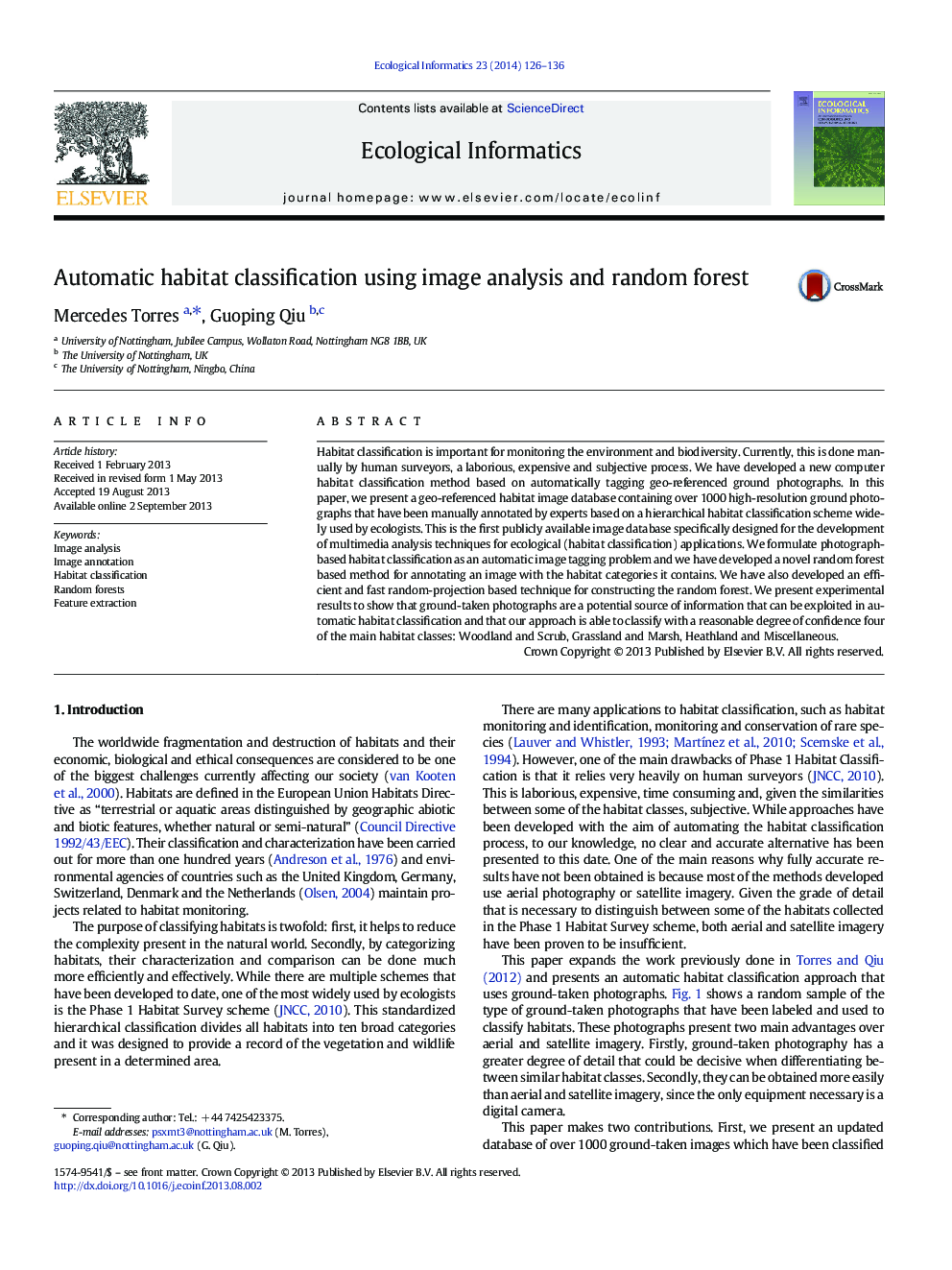| Article ID | Journal | Published Year | Pages | File Type |
|---|---|---|---|---|
| 4374919 | Ecological Informatics | 2014 | 11 Pages |
•We approach automatic Phase 1 habitat classification as an image annotation problem.•We created a database of 1076 expert-annotated ground-taken photographs.•We use feature extraction and random projection forests to annotate images.•Two different training and testing methods were used.•Results indicate that 3 broad habitat classes are detected with high accuracy.
Habitat classification is important for monitoring the environment and biodiversity. Currently, this is done manually by human surveyors, a laborious, expensive and subjective process. We have developed a new computer habitat classification method based on automatically tagging geo-referenced ground photographs. In this paper, we present a geo-referenced habitat image database containing over 1000 high-resolution ground photographs that have been manually annotated by experts based on a hierarchical habitat classification scheme widely used by ecologists. This is the first publicly available image database specifically designed for the development of multimedia analysis techniques for ecological (habitat classification) applications. We formulate photograph-based habitat classification as an automatic image tagging problem and we have developed a novel random forest based method for annotating an image with the habitat categories it contains. We have also developed an efficient and fast random-projection based technique for constructing the random forest. We present experimental results to show that ground-taken photographs are a potential source of information that can be exploited in automatic habitat classification and that our approach is able to classify with a reasonable degree of confidence four of the main habitat classes: Woodland and Scrub, Grassland and Marsh, Heathland and Miscellaneous.
